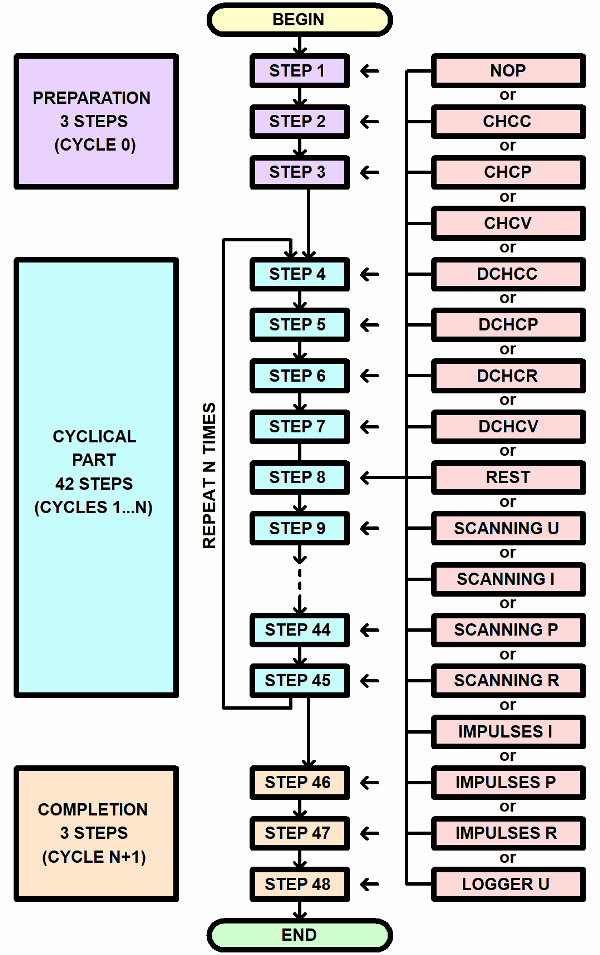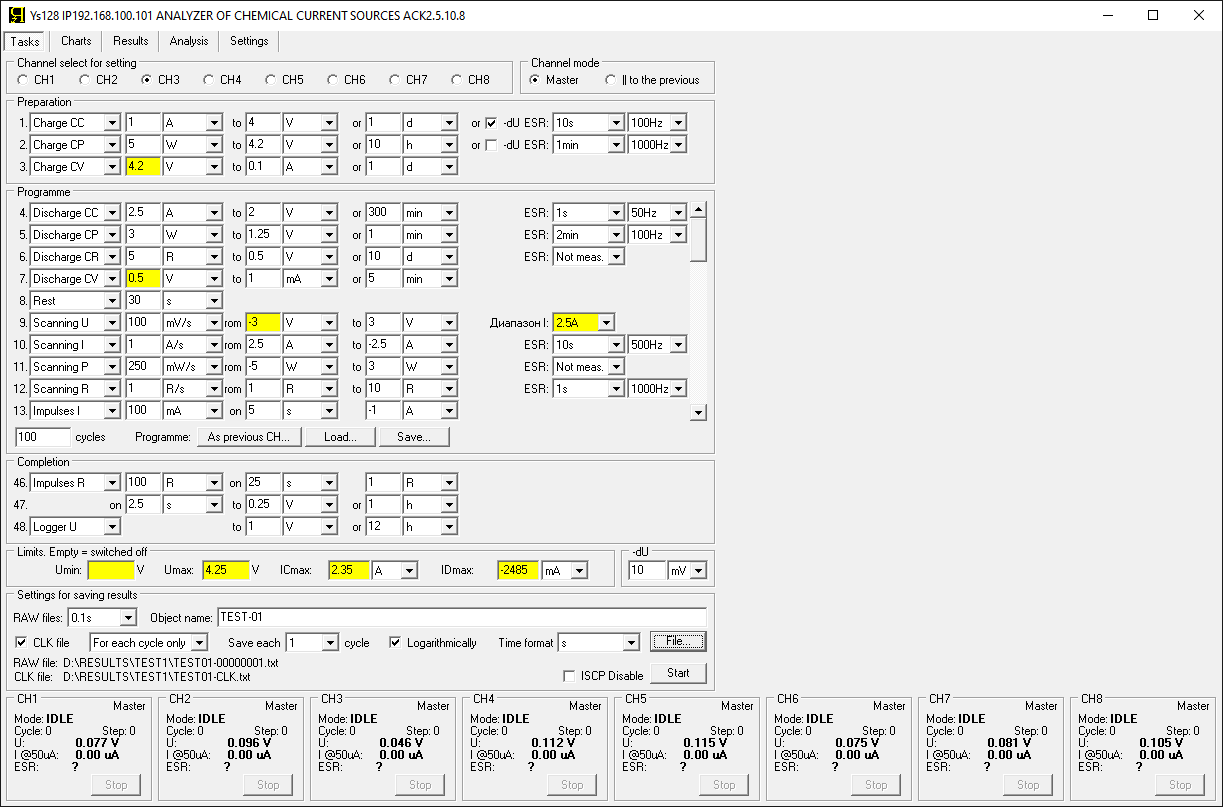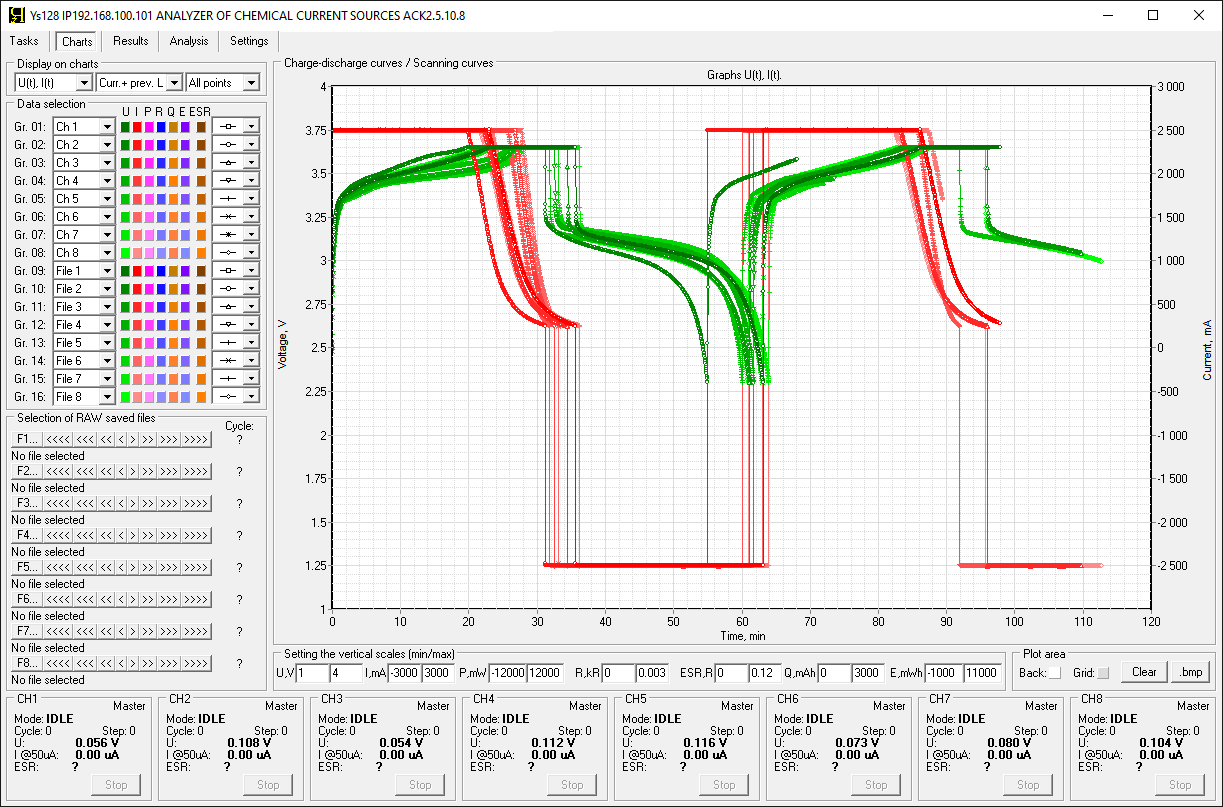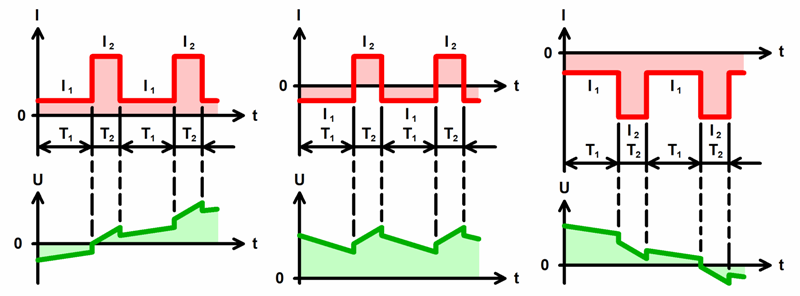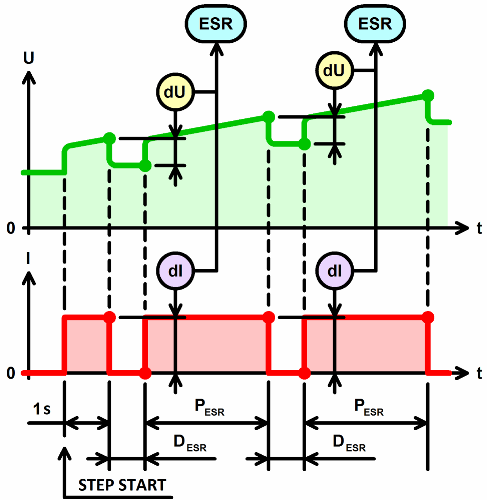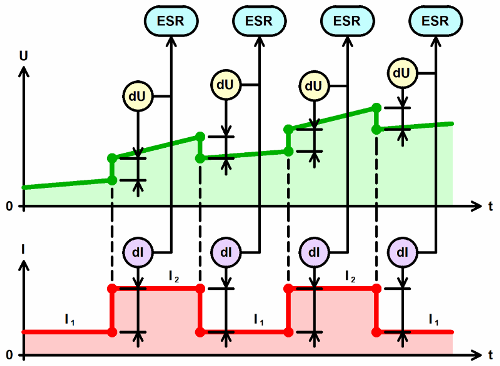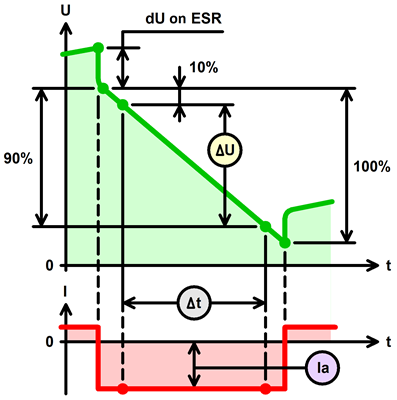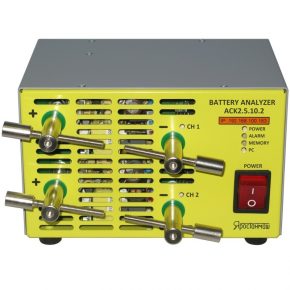Description
Cell and battery analyzer ACK2.5.10.1 tests various sources and energy storage devices, for example:
- accumulators of any type (Li-ION, Li-Po, LiFePo4, LTO, NMC, Ni-Cd, Ni-MH, Pb-Acid, as well as any others)
- supercapacitors (ultracapacitors), and also batteries of them
- galvanic cells (primary power supplies)
- electrochemical cells
- fuel cells
- redox cells
- solar cells
- as well as any other chemical and physical sources and storages of energy.
Cell and battery analyzer ACK2.5.10.1 contain a controlled power supply and also a controlled electronic load. The power supply can operate in voltage, current or power stabilization modes. The load can operate in voltage, current or power stabilization modes, and also in resistance stabilization mode.
Due to this, cell analyzer ACK2.5.10.1 can perform many tests. For example, the simplest, such as a single charge or a single discharge of the cell. In addition, the instrument can perform cyclic tests, with multiple alternation of charge and discharge. Finally, electrochemical cell analyzer ACK2.5.10.1 can perform complex combination modes that simulate real-life cell conditions.
Each channel of the ACK2.5.10.1 analyzer has a very wide operating range of the charge and discharge current of the cell under test. From 2.5 micro Amperes to 2.5 Amperes. Thanks to this, the potentiostat ACK2.5.10.1 allows testing both factory batteries and laboratory electrochemical cells.
Battery analyzer ACK2.5.10.1 operates under computer control. During the test, the analyzer measures many parameters of the cell under test. The instrument returns measurement results in the form of text result files. In addition, the device software automatically generates charge-discharge graphs for the cell under test. Finally, the analyzer software automatically generates graphs of degradation of cell parameters (which is convenient for cycle-life tests).
Key parameters of cell and battery analyzer ACK2.5.10.1
Charge current as well as discharge current of the cell under test: from 2.5 μA to 2.5 A;
Operating voltage range on the tested cells: from minus 4.5 to plus 4.5 V.


